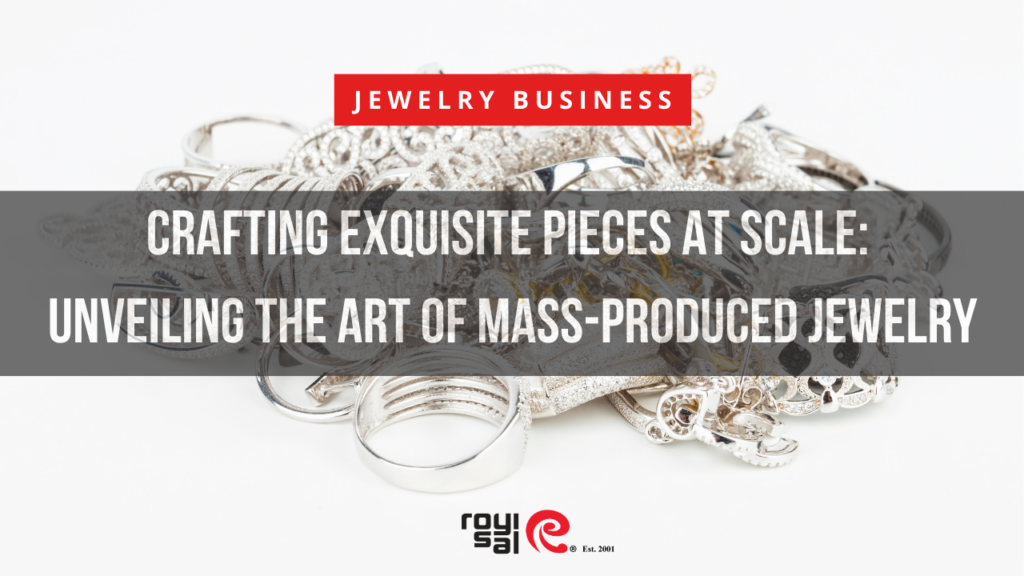
Adorned with gleaming jewels, we often associate fine jewelry with exclusivity and grandeur. However, beneath the dazzling façade of precious stones and intricate designs lies a world of mass production, where artistry meets efficiency to create exquisite pieces accessible to a wider audience.
Mass production in jewelry manufacturing is an intricate dance between creativity, technology, and precision. Jewelry manufacturers today employ sophisticated techniques and rigorous quality control measures to ensure that each piece, even when produced in large quantities, retains its elegance and charm.
The journey of a mass-produced jewelry piece begins with a vision, meticulously crafted by designers who translate their artistic flair into tangible forms. Assembly line production, a cornerstone of mass manufacturing, orchestrates the seamless integration of various tasks, each performed by skilled artisans.
The true art of mass-produced jewelry lies in striking a delicate balance between cost, quality, and design. Technology advances and design ingenuity flourishes, mass-produced jewelry continues to evolve, blurring the lines between exclusivity and accessibility, making the art of jewelry accessible to all.
Unveiling the Art of Mass-Produced Jewelry
Die Casting
In the realm of jewelry manufacturing, die casting stands as a testament to the harmonious blend of artistry and efficiency. This technique, akin to a sculptor’s mold, transforms molten metal into exquisite pieces with remarkable precision and speed. It is a process that begins with meticulous preparation and culminates in the creation of flawless jewelry pieces.
The Art of Mold Preparation
Die casting’s journey commences with the creation of master molds, the very foundation upon which intricate jewelry designs take shape. These molds, often crafted from durable materials like steel or aluminum, are meticulously carved with precision, ensuring that every detail of the desired design is captured.
Molten Metal: The Lifeblood of Jewelry Creation
With the molds prepared, the next step involves the selection of the appropriate metal alloy, carefully chosen for its desired properties, such as strength, malleability, and luster. The chosen metal is then melted in a furnace, reaching temperatures that can exceed 2,000 degrees Fahrenheit.
Injection: The Moment of Transformation
The molten metal, now a liquid symphony of heat and potential, is injected into the carefully prepared die mold under immense pressure. This forceful injection ensures that every crevice and detail of the mold is filled, allowing the metal to take on the form of the desired jewelry piece.
Solidification: A Journey from Liquid to Form
As the molten metal fills the mold, it begins its journey of solidification, cooling and hardening into the desired shape. This process, governed by the principles of heat transfer and controlled cooling, ensures that the metal retains its strength and integrity while capturing the intricate details of the design.
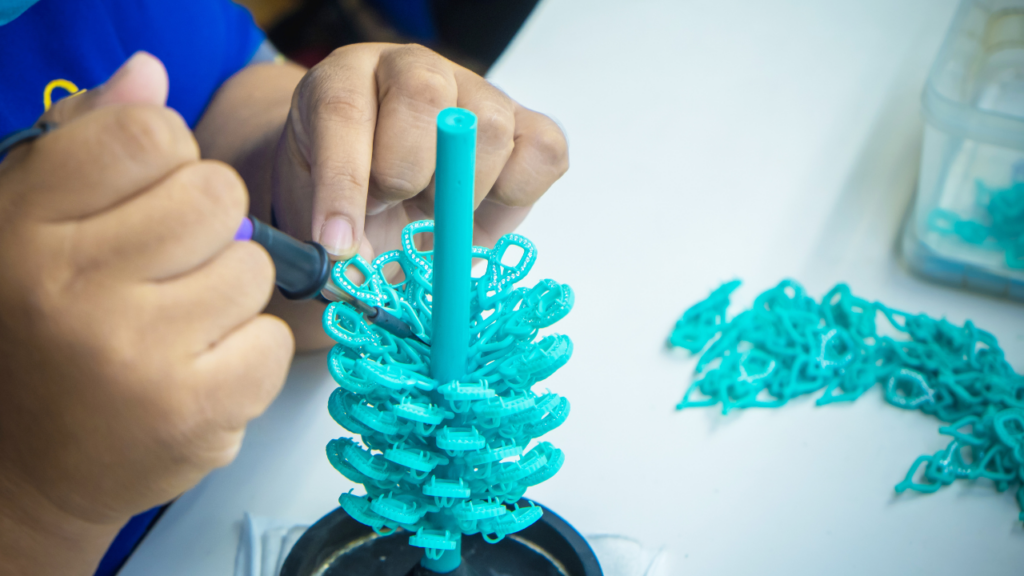
Advantages: A Symphony of Efficiency
Die casting offers a multitude of advantages that make it a cornerstone of jewelry manufacturing:
- High Production Speed: Die casting’s ability to produce multiple pieces simultaneously significantly increases production speed, creating large quantities of jewelry in a shorter timeframe.
- Precision and Consistency: Precision-crafted molds ensure that each piece produced is identical to the original design, maintaining consistency in quality and detail.
- Versatility: Die casting can be used to create a wide range of jewelry pieces, from intricate pendants to delicate earrings, catering to diverse design styles and preferences.
A Glimpse into the Process: An Illustration of Excellence
To fully appreciate the art of die casting, consider the image of a die-casting machine, its sleek form, and intricate mechanisms hinting at the precision with which it operates. Molten metal flows from the furnace, and a fiery brilliance cascades into the waiting mold. With a surge of pressure, the molten metal fills every mold contour, solidifying it into a glistening jewelry piece.
Die casting is not merely a manufacturing technique; it is an intricate dance between artistry, technology, and precision. It is the process that transforms molten metal into exquisite jewelry pieces, making the art of jewelry accessible to a broader audience.
Stamping
In the realm of jewelry manufacturing, stamping emerges as a testament to the delicate interplay between artistry and craftsmanship. Like an artist’s printmaking, this technique transforms sheet metal into intricate designs with remarkable cost-effectiveness and versatility.
The Symphony of Dies and Presses
Stamping’s journey begins with the creation of dies, the very foundation upon which intricate jewelry designs take shape. These dies, often crafted from hardened steel, are meticulously carved with precision, bearing the negative image of the desired design.
With the dies prepared, the next step involves the selection of the appropriate sheet metal, carefully chosen for its desired properties, such as malleability, strength, and compatibility with the stamping process. The chosen sheet metal is then placed on a sturdy press, where the die descends with controlled force.
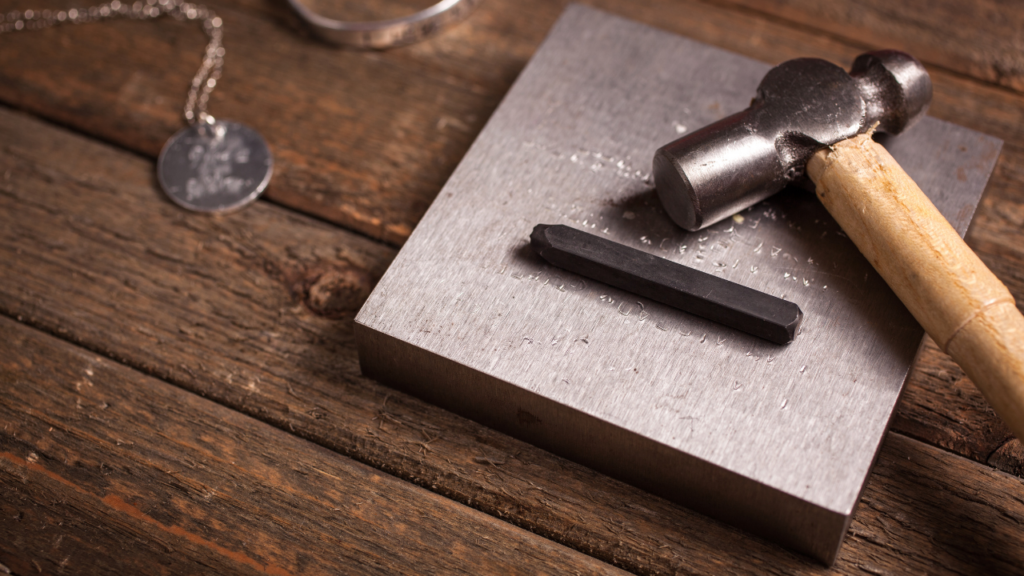
The Imprint of Design: A Transformation of Metal
As the die presses upon the sheet metal, it imprints the design, creating a raised or recessed relief on the metal surface. This forceful impact ensures that every detail of the design is transferred onto the metal, allowing the sheet metal to take on the form of the desired jewelry piece.
Advantages: A Symphony of Efficiency and Versatility
Stamping offers a multitude of advantages that make it a cornerstone of jewelry manufacturing:
- Cost-effectiveness: Stamping’s ability to produce multiple pieces simultaneously reduces production costs, making it an economical choice for mass-produced jewelry.
- Versatility: Stamping can be used to create a wide range of jewelry pieces, from intricate pendants and delicate bracelets to bold earrings, catering to diverse design styles and preferences.
- Suitability for Intricate Designs: Stamping is particularly well-suited for creating intricate designs with fine details, as the dies can capture even the most minute design elements.
A Glimpse into the Process: An Illustration of Excellence
To fully appreciate the art of stamping, consider the image of a stamping press, its sturdy frame and intricate mechanisms hinting at the precision with which it operates. Sheet metal, meticulously cut and prepared, awaits its transformation. With a surge of force, the die descends, imprinting the design onto the metal surface. A gleaming jewelry piece emerges, its intricate details testament to the art of stamping.
Stamping, therefore, is not merely a manufacturing technique; it is an artistic endeavor that transforms sheet metal into exquisite jewelry pieces, making the art of jewelry accessible to a wider audience.
Assembly Line Production
In the realm of jewelry manufacturing, assembly line production emerges as a testament to the harmonious blend of efficiency and craftsmanship. This technique, akin to a well-rehearsed orchestra, orchestrates the seamless integration of skilled artisans, each performing a specific task with precision, to create exquisite jewelry pieces in a streamlined manner.
Division of Labor: A Symphony of Specialization
Assembly line production’s foundation lies in the division of labor, where the complex process of jewelry creation is broken down into individual tasks, each assigned to a specialized artisan. This specialization allows workers to develop expertise in their specific areas, enhancing efficiency and ensuring consistent quality throughout production.
Sequential Tasks: A Harmonious Flow of Creation
The sequential nature of assembly line production ensures a smooth and uninterrupted flow of materials and tasks. Each artisan, following a predetermined sequence, performs their designated task, passing the partially completed jewelry piece to the next artisan in the line. This continuous flow minimizes downtime, maximizing production efficiency and reducing overall production time.
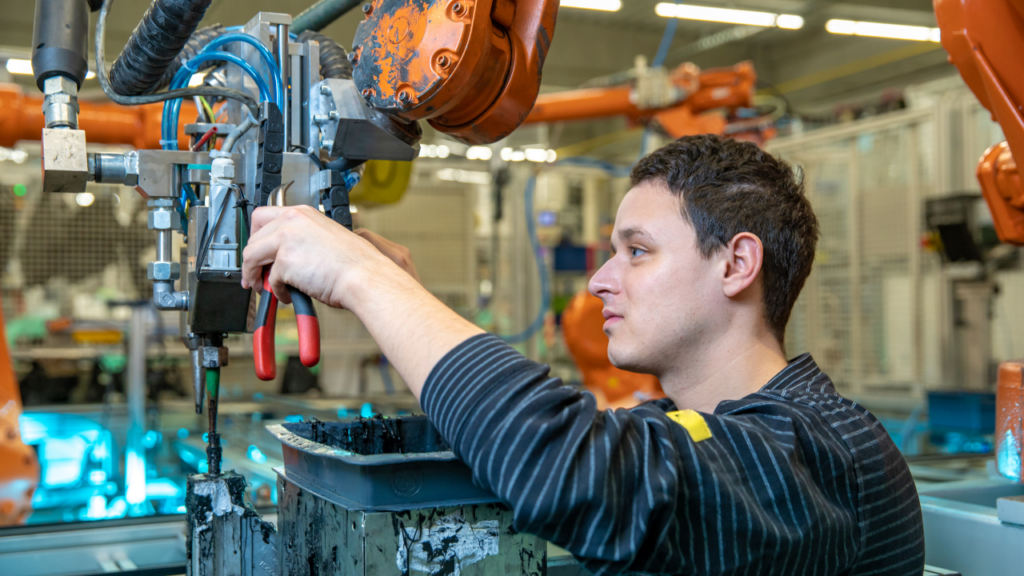
Benefits: A Symphony of Excellence
Assembly line production offers a multitude of advantages that make it a cornerstone of mass-produced jewelry manufacturing:
- Increased Efficiency: By breaking down the production process into smaller, specialized tasks, assembly line production significantly enhances the overall efficiency of jewelry creation.
- Reduced Production Time: With each artisan focused on a specific task, the sequential nature of assembly line production significantly reduces the overall time required to produce each jewelry piece.
- Improved Quality Control: The division of labor and sequential flow of materials allow for continuous quality checks at each stage of production, ensuring that every piece meets the highest standards of quality and craftsmanship.
A Glimpse into the Process: An Illustration of Excellence
To fully appreciate the art of assembly line production, consider the image of a bustling jewelry assembly line. Artisans, each with their unique skillset, stand at their respective stations, their hands moving in a synchronized rhythm. A partially completed jewelry piece moves along the conveyor belt, passing from one artisan to the next, each adding their touch of precision until the final piece emerges, a testament to the collective artistry of the assembly line.
Therefore, Assembly line production is not merely a manufacturing technique; it is an orchestrated dance of specialized artisans, each playing a vital role in creating exquisite jewelry pieces. It is the process that transforms raw materials into exquisite pieces, making the art of jewelry accessible to a wider audience.
Balancing Cost, Quality, and Design
In the realm of mass-produced jewelry manufacturing, achieving a harmonious balance between cost, quality, and design is an intricate dance that requires careful consideration and strategic decision-making. Manufacturers must navigate this delicate equilibrium to create jewelry pieces that are both affordable and aesthetically pleasing while maintaining the highest standards of quality.
The Challenges of Achieving Harmony
Balancing cost, quality, and design in mass-produced jewelry presents many challenges. Manufacturers must grapple with the following considerations:
- Cost Efficiency: The pressure to produce jewelry at lower costs can lead to compromises in material selection or manufacturing processes, potentially affecting the overall quality and aesthetics of the pieces.
- Quality Assurance: Maintaining high-quality standards while producing large quantities of jewelry can be demanding. Manufacturers must implement rigorous quality control measures to ensure consistency and prevent defects.
- Design Innovation: Staying abreast of evolving trends and consumer preferences while balancing cost and quality can be challenging. Manufacturers must invest in design innovation without compromising affordability or practicality.
Strategies for Achieving Balance
To strike a balance between cost, quality, and design, jewelry manufacturers can employ a range of strategies:
- Material Selection: Carefully selecting materials that balance cost, durability, and aesthetics is crucial. Alternative materials, such as vermeil or plated metals, can provide a look and feel similar to precious metals at a lower cost.
- Process Optimization: Streamlining production processes can reduce costs and improve efficiency without compromising quality. Investing in automation and adopting lean manufacturing techniques can optimize production time and resource utilization.
- Quality Control Measures: Implementing rigorous quality control procedures throughout the production process is essential to ensure consistency and identify and rectify defects promptly. This includes inspecting materials, monitoring manufacturing processes, and thoroughly examining finished pieces.
- Design Collaboration: Collaborating with talented designers can lead to innovative and appealing designs that align with current trends while remaining cost-effective and practical for mass production.
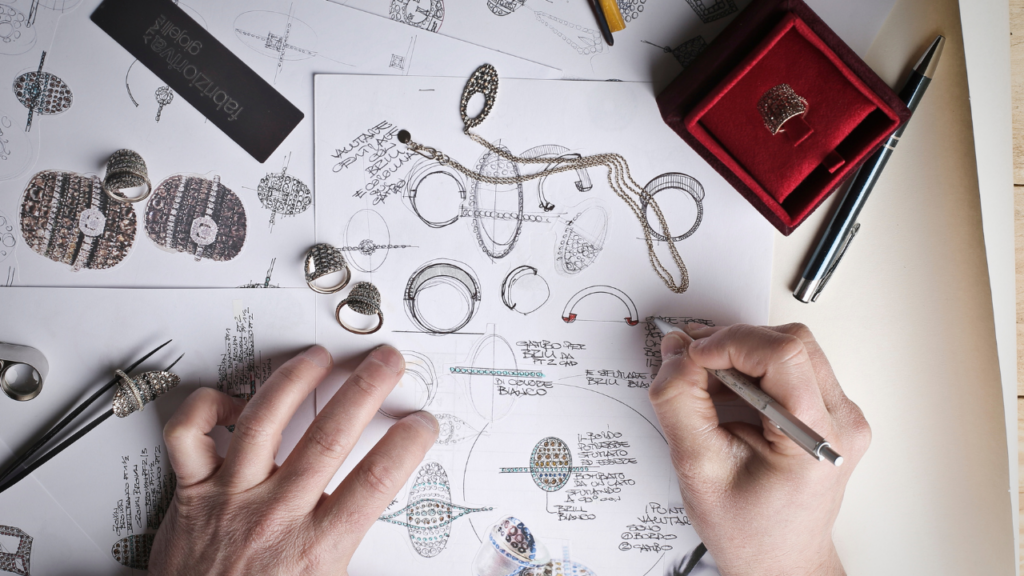
Examples of Successful Brands
Several jewelry brands have successfully achieved a balance between cost, quality, and design in their mass-produced products:
- Pandora: Known for its customizable charm bracelets, Pandora offers a wide range of styles and designs at accessible prices, utilizing materials like sterling silver and cubic zirconia.
- Swarovski: Renowned for its crystal jewelry, Swarovski offers a variety of pieces, from everyday wear to statement pieces, balancing quality and design while maintaining affordability.
- Fossil: A famous brand for fashion watches and jewelry, Fossil offers a mix of classic and contemporary designs at competitive prices, utilizing materials like stainless steel and leather.
These brands demonstrate that achieving a balance between cost, quality, and design in mass-produced jewelry is possible and essential for success in the competitive jewelry market. By carefully considering these factors and implementing effective strategies, manufacturers can create exquisite jewelry that are accessible to a broader audience.
Conclusion
As we conclude our exploration into the art of mass-produced jewelry, we are left with a newfound appreciation for the intricate dance between artistry, technology, and precision that brings exquisite pieces to a wider audience. Mass production, far from being a mere means of producing large quantities of jewelry at lower cost, stands as a testament to the enduring power of creativity and craftsmanship in the jewelry industry.
Manufacturers have mastered the art of transforming raw materials into objects of beauty and elegance through the techniques of die casting, stamping, and assembly line production. Each method, like a carefully orchestrated note in a symphony, contributes to the harmonious creation of mass-produced jewelry.
Yet, amidst this symphony of efficiency, manufacturers face the delicate challenge of balancing cost, quality, and design. Striking this equilibrium requires careful consideration of material selection, process optimization, and quality control measures, ensuring that every piece meets the highest standards of craftsmanship while remaining accessible to a wider audience.
Despite the challenges, the future of mass-produced jewelry remains bright, fueled by advancements in technology and design. Manufacturers continue to innovate, exploring new materials, techniques, and design concepts that push the boundaries of creativity and affordability.
Mass-produced jewelry is not merely a product of efficiency; it is an art form in its own right, democratizing the world of jewelry and making exquisite pieces accessible to all. As we adorn ourselves with these creations, we not only wear jewelry; we wear the symphony of creativity, technology, and precision that lies behind each exquisite piece.
Share this post

